Team Europe Champion Ralph Eckert explores German pool history and some of the nation’s forgotten champions.
________________________________________________
Special for POOLHISTORY.COM By Ralph Eckert
EDITOR’S NOTE: In this article — the first in a two-part series — Ralph Eckert tells the story of German pool champ Hugo Kerkau and Berlin’s famous Kerkau Palace. Mr. Eckert is a pool champion, author, trick shot artist and esteemed trainer. However, for American readers, Mr. Eckert may be best known as Team Europe’s captain during the 2023 Mosconi Cup. This material was translated from the original German by Allan Wier II and appeared previously in the German-language Touch Billiard Magazine in Jan. 2022.
One hundred and twenty-five years ago, on a warm summer day on 7th July, 1895 — in the old Reichstag building in Berlin — two opponents, Johann Trebar and Hugo Kerkau, began a days-long competition for the national straight-rail caroms championship. How many spectators were able to follow the six-day-long competition? One thousand? Two thousand? But however many, plenty of spectators came dressed to the nines, especially those who paid admission to follow the competition from expensive box seats.
Berlin journalists described an atmosphere that seemed more opera than sporting competition. But they also noted how the crowd fell into respectful silence as Johann Trebar lined up one particularly dramatic shot. Smack. The leather tip of his well-chalked cue had struck the white ball; it rolled up to the second ball. Clack. From there it rolled to a side cushion, bounced off, slowed, but continued rolling toward a third ball. Continuing to lose speed, the ball made its way towards the third ball. Will it make it? A single point still separated Trebar from victory. His younger opponent, the 20 year old from Berlin, Hugo Kerkau, rose from his chair to get a better look. Will Trebar make the point, or will Hugo Kerkau get another crack at the title? The match was a volatile one, not the least of which because in December 1894 and January 1895 the two had exchanged angry words in separate mudslinging newspaper interviews.
Now all of the thousands of gathered spectators craned their necks. A barely audible clack, a whispering multitude and subdued, but appreciative applause followed. A bitterly disappointed Hugo Kerkau loses.
THE CAFÉ KERKAU & THE GERMAN CHAMPIONSHIP
However, Hugo Kerkau did not allow that unfortunate end to deter him from his goals. With the support of his father Gottfried Kerkau and younger brothers Egon and Paul, Hugo opened the “Café Kerkau” that included its own billiard academy housed inside. With almost 40 billiard tables, the Café Kerkau was one of the largest billiard halls in Europe. It opened in central Berlin on December 12, 1895 and here (as in numerous other halls in the city) many of Berlin’s cultural elites would gather and even captivate onlookers with their billiards prowess. For instance, the famous Berlin sculptor, Reinhold Begas, reportedly managed a run of 98 in 1903. Beginning in January of 1896, a man named August Woerz also began playing regularly at Café Kerkau. Woerz’s mad skills on the table — he sometimes ran 1,000 points or more in straight-rail caroms — did not go unnoticed, particularly since such long runs more typically were the domain of room owner Hugo Kerkau. As such, it was inevitable that the two eventually would lock horns.
Upon his return after a prolonged stay in the USA where he had been accepting challenges from all the nation’s best players, Hugo Kerkau issued an open challenge to any player who would take him on. In framed posters with gold lettering that he hung around his billiard club, Kerkau offered money matches to anyone who possessed the intestinal fortitude to face him. He even offered huge handicaps. Soon thereafter August Woerz responded, issuing his own public challenge in the newspapers. Proposals and counter-proposals ensued, reports were written, and eventually a neutral site was selected to determine who was Germany’s best professional billiard player.
That memorable encounter, the match for the “Championship of Germany,” took place from November 1 through December 19 of 1897. Inconceivable in today’s world, Hugo Kerkau and August Woerz actually played nearly fifty days to 20,000 points. And far from being limited to Café Kerkau, the championship challenge match was played in fourteen different German cities — and always in halls filled to capacity. The daily newspapers reported comprehensively on each day’s developments. Of course, there was no lack of recriminations on both sides and corresponding responses in the daily newspapers (which naturally added a fair amount of emotion and explosiveness to the matches), thus further increasing spectator interest. Hugo Kerkau triumphed by a deciding score of 20,000 to 9,309 points. He also set new world records for average and high runs.
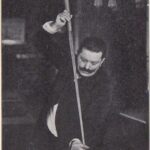
August Woerz
HUGO KERKAU: BILLIARDS WORLD CHAMPION
When, where and who Hugo Kerkau’s opponent was when he eventually won his world title can no longer be reconstructed with any certainty. However, an early photo of a still quite young Hugo Kerkau already bears the caption “World Champion of Billiards.” Whether he really had won this title by this time or was simply recognized as a world champion due to his many records (world record in 1901 in straight rail with 7,156 points!) will probably remain an open question. But the requirements for acquiring such a world title were enormous, both then and now.
Since the late 19th century, matches for the professional world title were decided on a challenge basis. At the onset there was usually a tournament, to which only the best six to eight players were invited. The first world championship ever in the sport is supposed to have taken place in 1873. The world champion would then defend his title three to four times a year, or accept challenge matches (each player had to put up a minimum bet of about $15,000 per player in today’s U.S. currency). In the USA, such matches were regulated in a similar fashion for both carom billiards and in pool.
In Hugo Kerkau‘s story, one match was followed by another. The bulk of these were played in the “Café Kerkau,” until he opened a new billiard hall, the “Kerkau Palace,” in 1910 on Behrenstraße 48 with his father, his brothers, and probably other partners. Supposedly there were no fewer than 48 tables in the establishment. And where, one might ask today, did all those billiard tables come from? Perhaps from the Berlin billiard table manufacturer Dannenberg & Co on Weberstraße 16 or from Neuhusen’s billiard factory on Kommandantenstraße 77-79? There was also a billiard ball factory named Dietrich on Potsdamer Str. 35. Unfortunately, none of these businesses remain in existence today.
Initially, business was going great guns at the “Kerkau Palace.” Along with billiards, there was also a ballroom with a live orchestra, a well-attended café, and chess tournaments. By 1914 the Kerkaus already were millionaires. However, the early passing of Hugo’s younger brother, Egon Kerkau in 1912, marked the beginning of years of misfortunes for the family. Egon died of a lung condition, perhaps from the cigar smoke in the salons. And then around 1918, with inflation rising, the Kerkau Palace began to collapse financially and soon thereafter the entire Kerkau holding company folded. After that, on April 15, 1918, Hugo Kerkau himself died — apparently from blood poisoning caused by a cigar burn he received while in the crowd of an elevated train. He met death early, at only age 43, while wasting away in a small apartment, and his final resting place is supposed to have been at the Tempelhof Cemetery.
________________________________________________
Ralph Eckert, author and competitor, was Euro Tour champion in Antalya in 1999, first in the European rankings in the Euro Tour in 2000, and the Champions League winner in 2004. In 2023, Mr. Eckert was named Team Europe captain for the Mosconi Cup. Read Part II of his two-part series here.
________________________________________________
The Story In Images
- Johann Trebar
- The Kerkau and Woerz Books
- The Cafe Woerz Building, Now
- The Cafe Woerz
- Cafe Woerz
- Kerkau Cafe, 1895
- Kerkau Cafe, 1945
- Kerkau Cafe, Now
- Kerkau Palace 1912
- Kerkau Palace, Interior
- Kerkau Palace, Now
Pool History Merch
Help preserve pool history by purchasing a coffee mug, t-shirt or other merch. That's because we re-invest 100 percent of net sales proceeds to pay guest writers and artists. Have an article to pitch? Go to the Guidelines for Guest Writers tab for more info.
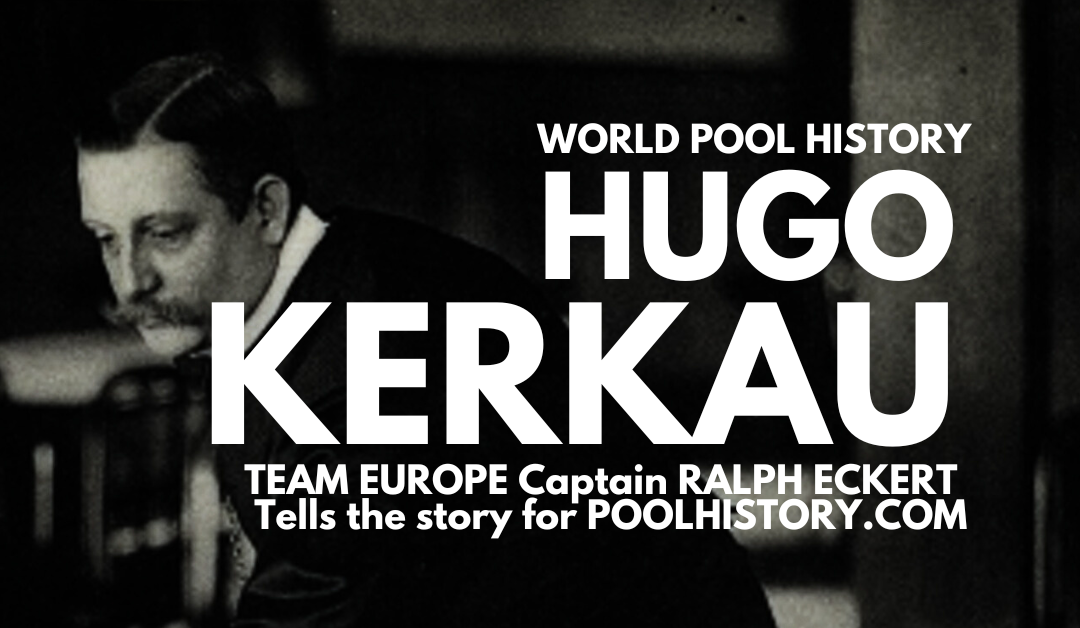

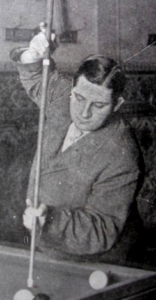
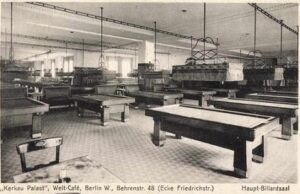
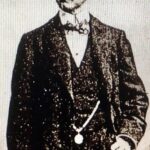
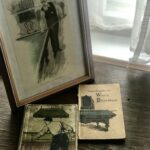

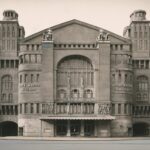
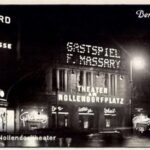
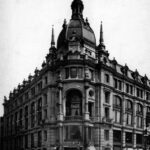
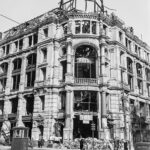

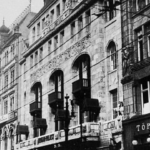
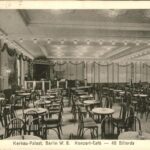




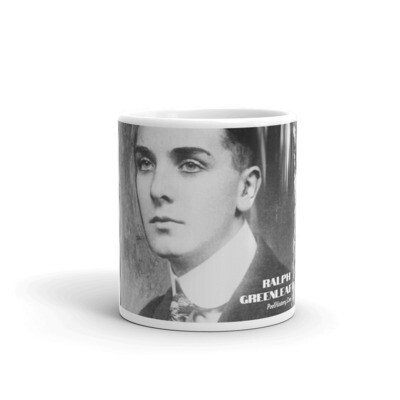

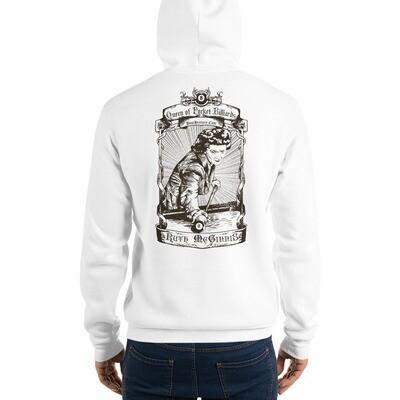


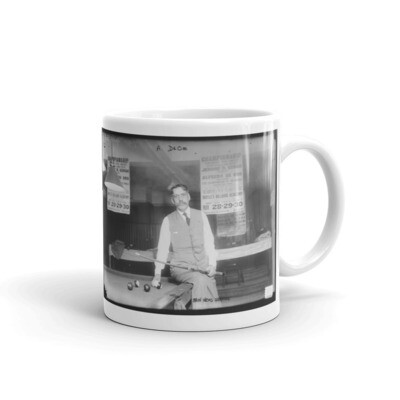

Recent Comments